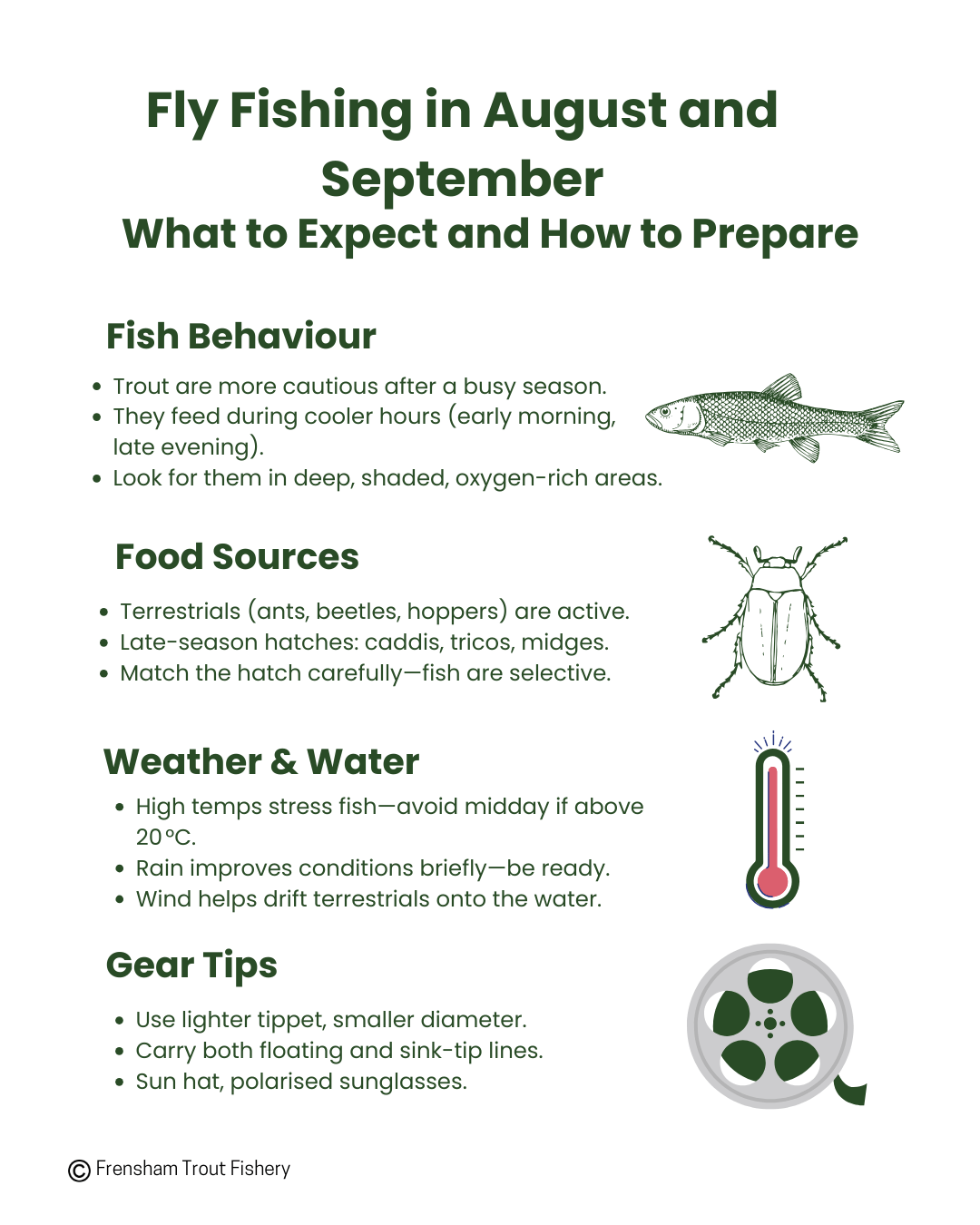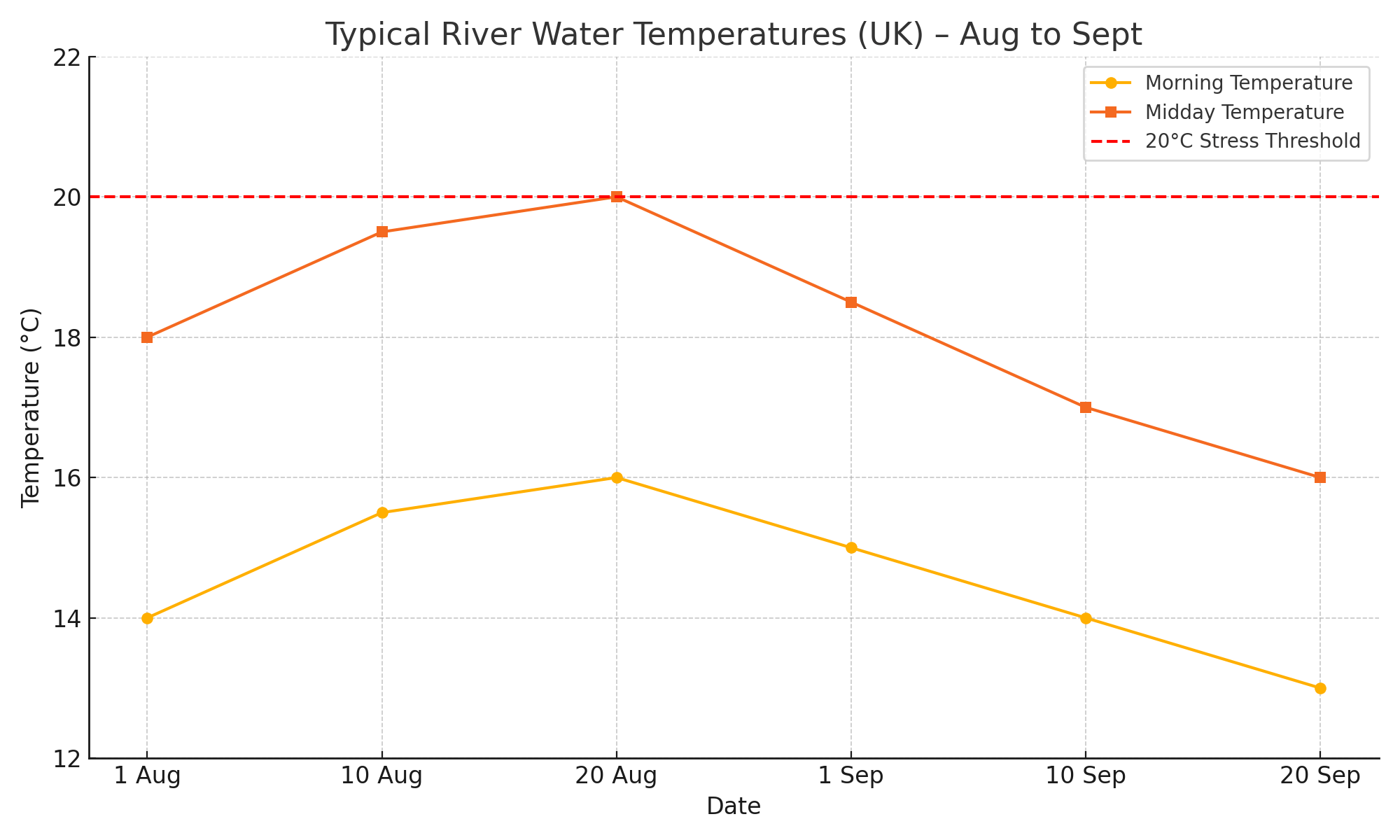Late summer fly fishing, during August and September, offers a unique mix of challenges and opportunities. As water levels change and temperatures fluctuate, both fish behaviour and fly fishing strategies shift. Here’s what to expect—and how to prepare for successful sessions on the water at this time of year.
1. Changing Fish Behaviour
By August, trout and other freshwater species have experienced a full season of angling pressure. They’re more cautious and selective. Rising water temperatures and lower oxygen levels also have their impact on feeding patterns.
-
Trout become more active during cooler hours—think early morning and late evening.
-
Fish hold in deeper, cooler pools or shaded areas during the day.
-
Surface activity may decrease, but subsurface feeding continues, especially on nymphs and emergers.
2. Hatches and Food Sources
Late summer can bring sporadic but important hatches:
-
Terrestrials like ants, beetles, and grasshoppers become key food sources, especially on windy days.
-
Trico mayflies and late-season caddis still appear on ocassion.
-
Midges often dominate the menu, especially in stillwaters or during low flows.
‘Matching the Hatch’ accurately becomes even more critical, especially as fish get picky.
3. Weather and Water Conditions
Expect unpredictability.
-
Hot spells can cause water temps to rise dangerously high for trout. Avoid fishing during midday if temperatures climb above 20°C.
-
Rainfall and storms may bring brief but refreshing cool flows—be ready to take advantage of them.
-
Wind is common and can help or hinder, depending on how it affects casting and surface disturbance.
Always check weather conditions before heading out.
4. Gear Tips for Late Summer
Adapt your gear to changing conditions:
-
Lighter tippets help with wary fish in clear water.
-
Smaller flies (size 16–22) often outperform larger patterns, unless you’re using terrestrials.
-
Floating lines are still your main tool, but keep a sink-tip or intermediate line handy for deeper pools or lakes.
-
Clothing – a wide-brim hat and sun protection are a must.
Don’t forget polarised sunglasses—they help spot fish in low, clear water.
5. Mind the Fish: Ethical Considerations
With warmer water and higher stress levels, fish need extra care.
-
Use barbless hooks and handle fish quickly and gently. This is a principle rule at Frensham.
-
Keep them wet and minimise air exposure.
-
Avoid fishing if water temps exceed 18°C —it’s better for the fish, and the fishing will be difficult anyway.
Final Thoughts
Fly fishing in August and September requires a thoughtful, adaptive approach. The rewards are there: less crowded waters, smart fish, and stunning late-summer scenery. Know your water, read the conditions, and match your gear and tactics accordingly.
Preparation and observation are your best allies. The late summer season might not be the easiest, but it’s certainly one of the most rewarding—for those who know how to work with it.
Tight lines,
Matt

